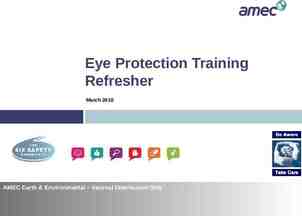Creating a PBIS School Leadership Team Images in this module were
24 Slides2.15 MB

Creating a PBIS School Leadership Team Images in this module were obtained at google.com/images unless otherwise specified.

Some Context The school leadership team must oversee PBIS implementation. Any initiative has to fit into the school context. Any initiative has to have the support of school (and district) leadership. A PBIS team will lead the implementation.

Purpose Of The PBIS Team Customize PBIS implementation Develop processes, procedures, & tools Create organizational structures Collect and collate data Develop and provide staff supports

A Representative School Team Grade levels Areas of school Various skills & abilities Various positions & roles Family & student voice

PBIS Team Responsibilities Develop and monitor PBIS action plan Hold regular meetings Communicate with stakeholders Report outcomes

Take Stock First Start with the concept of “Work smarter, not harder!” Take inventory of what your school already has and streamline.

Committee Audit Worksheet Committee Purpose Expected Outcome Staff Involved School Improvement Priority List related goal (1 low, 5 high) 1 2 3 4 5 1 2 3 4 5 1 2 3 4 5 1 2 3 4 5 1 2 3 4 5 1 2 3 4 5 Adapted from MiBLSi Committee Audit Worksheet and Adapted from G. Sugai (1/26/01)

Where Do You Begin? Develop Behavioral expectations System for teaching expectations System for acknowledging appropriate behavior System for addressing inappropriate behavior Get feedback from staff along the way!

Ongoing Leadership Continuous Improvement Collect and use data to monitor Student outcomes Fidelity of PBIS implementation

Assigned Team Roles Facilitator Minute taker Data analyst Active team members

Team Roles and Responsibilities Template Team Responsibility Administrator Building Coach Facilitator Data Manager Recorder Communicator Active Team Members Family Member Student Person Responsible School Role

Facilitator Responsibilities 1) 2) 3) 4) Before meeting the facilitator provides agenda items to Minute Taker Starts meeting on time Determines date, time, and location of next meeting At the meeting, manages the “flow” of meeting by adhering to the agenda a) Facilitates team members in problem solving b) Is active participant in meeting

1) Before meeting Minute Taker Responsibilities a) Collects agenda items from Facilitator b) Prepares meeting minutes form c) Prints copies of the meeting minutes and problem-solving action plan form for each team member, or is prepared to project form via LCD d) Set up room for meeting, table, chairs, internet connection, LCD/document camera connection e) Open documents needed for the meeting (previous meeting minutes and a saved copy with current meeting date, student GPS, and other data access as needed) 2) At meeting, asks for clarification of tasks/decisions to be recorded in meeting minutes, as necessary a) Is active participant in meeting 3) After meeting a) Disseminates copy of completed meeting minutes to all team members within 24 hours b) Maintains electronic file of team documents

Data Analyst Responsibilities 1) Before meeting, reviews student discipline data a) Identifies potential new problems with precision (what, who, where, when, why) b) Asks Facilitator to add potential new problems to list of agenda items for upcoming meeting 2) At meeting, makes the following available, as appropriate a) Report on ODRs per day per month and core discipline reports (to identify/show potential new problems at broad/macro level) b) Other discipline data reports that i) Identify/show potential new problems at precise/micro level ii) Confirm/disconfirm inferences regarding new problems iii) Show “pre-solution” data for identified problems that do not currently have implemented solution actions iv)Show "solution-in-process” data for problems that do have currently implemented solution actions c) Is active participant in meeting

Team Member Responsibilities 1) Before meeting, recommends agenda items to Facilitator 2) At meeting, responds to agenda items and a) b) c) d) Analyzes/interprets data; determines if a new problem exists Ensures new problems are defined with precision (what, who, where, when, why) Discusses/selects solutions for new problems For problems with existing solution actions i) Reports on implementation status (Not started? Partially implemented? Implemented with fidelity? Completed?) ii) Suggests how implementation of solution actions could be improved iii)Analyzes/interprets data to determine whether implemented solution actions are working (i.e., reducing the rate/frequency of the targeted problem to our Goal level)? e) Is active participant in meeting

The Administrator’s Roles Maintain standards Make statements of support Establish and support PBIS team Serve as spokesperson Take leadership role in problem solving Attend and participate in team meetings Provide recognition to team & faculty Provide feedback to staff Adapted from Colvin, G. (2007). 7 Steps for developing a proactive school-wide discipline plan, 17

The Team Meeting Main focus: Problem Solving Use data to improve outcomes for students.

Team Meeting Agenda Items Progress monitoring Identifying new problems Problem solving Action planning Setting goals Assigning tasks Planning celebrations

Communication The PBIS Team must communicate with other staff regularly. Share data Update school board annually Provide newsletters Conduct surveys Provide info on website Involve local media

Evaluation Is Valuable The PBIS Team is responsible for evaluating implementation and progress. Improvement of outcomes Sustainability

Do It With Fidelity! Tiered Fidelity Inventory (TFI) – team assessment Efficient, valid index of extent to which PBIS core features are in place For the PBIS Team assessment section Section 1.1 Team Composition Section 1.2 Team Operating Procedures

1.1 Team Composition Feature Data Sources Subscale: Teams Scoring Criteria 0 Not implemented 1 Partially implemented 2 Fully implemented 1.1 Team Composition: Tier I team includes a Tier I School organizational chart 0 Tier I team does not exist or does not systems coordinator, a school administrator, a include coordinator, school Tier I team meeting family member, and individuals able to provide (a) minutes administrator, or individuals with applied applied behavioral expertise, (b) coaching behavioral expertise. expertise, (c) knowledge of student academic and 1 Tier I team exists, but does not include behavior patterns, (d) knowledge about the all identified roles or attendance of operations of the school across grade levels and these members is below 80%. programs, and for high schools, and (e) student Main Idea: Teams need 2 Tier I team exists with coordinator, representation. people with multiple administrator, and all identified roles represented, AND attendance of all roles skills and perspectives is at or above 80%. to implement PBIS well.

1.2 Team Operating Procedures Subscale: Teams Scoring Criteria Feature Data Sources 1.2 Team Operating Procedures: Tier I team meets Tier I team meeting agendas and minutes at least monthly and has (a) regular meeting Tier I meeting roles format/agenda, (b) minutes, (c) defined meeting descriptions roles, and (d) a current action plan. Tier I action plan Main Idea: Specific features are necessary to ensure meetings are effective for action planning and tracking progress. 0 Not implemented 1 Partially implemented 2 Fully implemented 0 Tier I team does not use regular meeting format/agenda, minutes, defined roles, or a current action plan. 1 Tier I team has at least two but not all four features. 2 Tier I team meets at least monthly and uses regular meeting format/agenda, minutes, defined roles, AND has a current action plan.

Summary Of PBIS School Team The PBIS team Customizes PBIS Develops and updates action plan Supports staff Uses data for decision making Does regular evaluation Communicates with stakeholders






